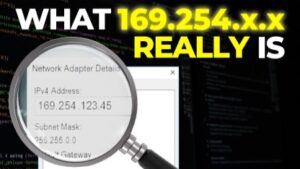Packet Tracer file (PT Version 7.1): https://bit.ly/2sO7QBV
Get the Packet Tracer course for only $10 by clicking here: https://goo.gl/vikgKN
Get my ICND1 and ICND2 courses for $10 here: https://goo.gl/XR1xm9 (you will get ICND2 as a free bonus when you buy the ICND1 course).
For lots more content, visit http://www.davidbombal.com – learn about GNS3, CCNA, Packet Tracer, Python, Ansible and much, much more.
#CCNA #PacketTracer #CCENT
Subnetting allows you to create multiple logical networks that exist within a single Class A, B, or C network. If you do not subnet, you are only able to use one network from your Class A, B, or C network, which is unrealistic.
Each data link on a network must have a unique network ID, with every node on that link being a member of the same network. If you break a major network (Class A, B, or C) into smaller subnetworks, it allows you to create a network of interconnecting subnetworks. Each data link on this network would then have a unique network/subnetwork ID. Any device, or gateway, that connects n networks/subnetworks has n distinct IP addresses, one for each network / subnetwork that it interconnects.
In order to subnet a network, extend the natural mask with some of the bits from the host ID portion of the address in order to create a subnetwork ID.
An IP address is an address used in order to uniquely identify a device on an IP network. The address is made up of 32 binary bits, which can be divisible into a network portion and host portion with the help of a subnet mask. The 32 binary bits are broken into four octets (1 octet = 8 bits). Each octet is converted to decimal and separated by a period (dot). For this reason, an IP address is said to be expressed in dotted decimal format (for example, 172.16.81.100). The value in each octet ranges from 0 to 255 decimal, or 00000000 – 11111111 binary.
Here is how binary octets convert to decimal: The right most bit, or least significant bit, of an octet holds a value of 20. The bit just to the left of that holds a value of 2^1. This continues until the left-most bit, or most significant bit, which holds a value of 2^7.
Transcription:
Now we’ve been told to configure router 1 with the last IP address in that subnet.
Now this is the subnet that we’re concentrating on initially.
So let’s start with that subnet the way you work out, first, last and broadcast addresses as follows.
The network has host portion populated with binary zeros. So notice host portion is all zeros. The first host has the host portion populated with binary zeros except for the last bit which is set to 1 in binary. So that’s the first host in the subnet.
The last host in the subnet has the host portion populated with binary ones except for the last bit which is set to binary 0. And I’ll show you in a moment what that is, but it’s easier to work out to the broadcast address first. So the broadcast address equals that subnet and the host portion is populated with binary ones. So it’s 1 1 followed by 4 ones.
Now you can work this out by saying 32 plus 16 plus 8 plus 4 plus 2 plus 1.But I find it easier to do the following:
If this is set to 1 and everything else is set to zeros. So it looks like this, that equals 64, 1 less than that equals 63. So if you’re asked for something like this, what is the broadcast address? Have a look at the next subnet and subtract 1 to get to the broadcast address of the previous subnet. The next subnet is 192.168.1.64. The broadcast address of the previous subnet is that subnet minus 1. So in other words, it’s 63 and then this is 62. So for this subnet that’s network and first host, this is the last and broadcast address.
Second last which we need for this switch is essentially 1 less than that. You can work out the binary but it may be easier just to subtract one from the decimal. So that’s 61 and the third last is 1 less than that, which is 60. So we now know the network, the first host, the broadcast, the last host, second last host and third last host. Easiest way to work this out is to work out to the network and then work out the next network. One less than the next network gives you the broadcast address for the current subnet and then you can just subtract 1 from that to get to the last host, second last host and third last host. First host is equal to the network portion plus 1, so there are our values; that means, we can now configure this router with the last IP address in the subnet…..














